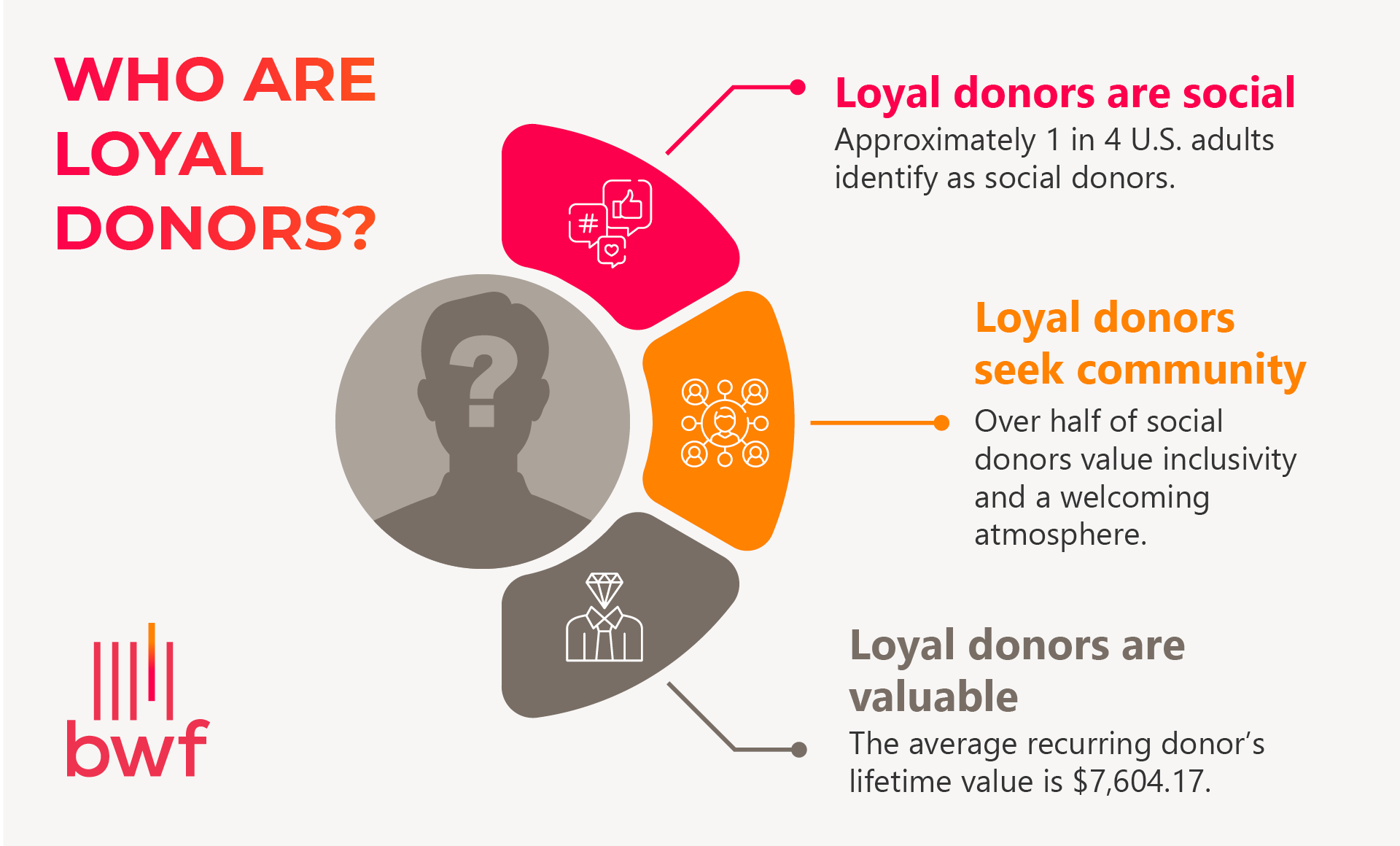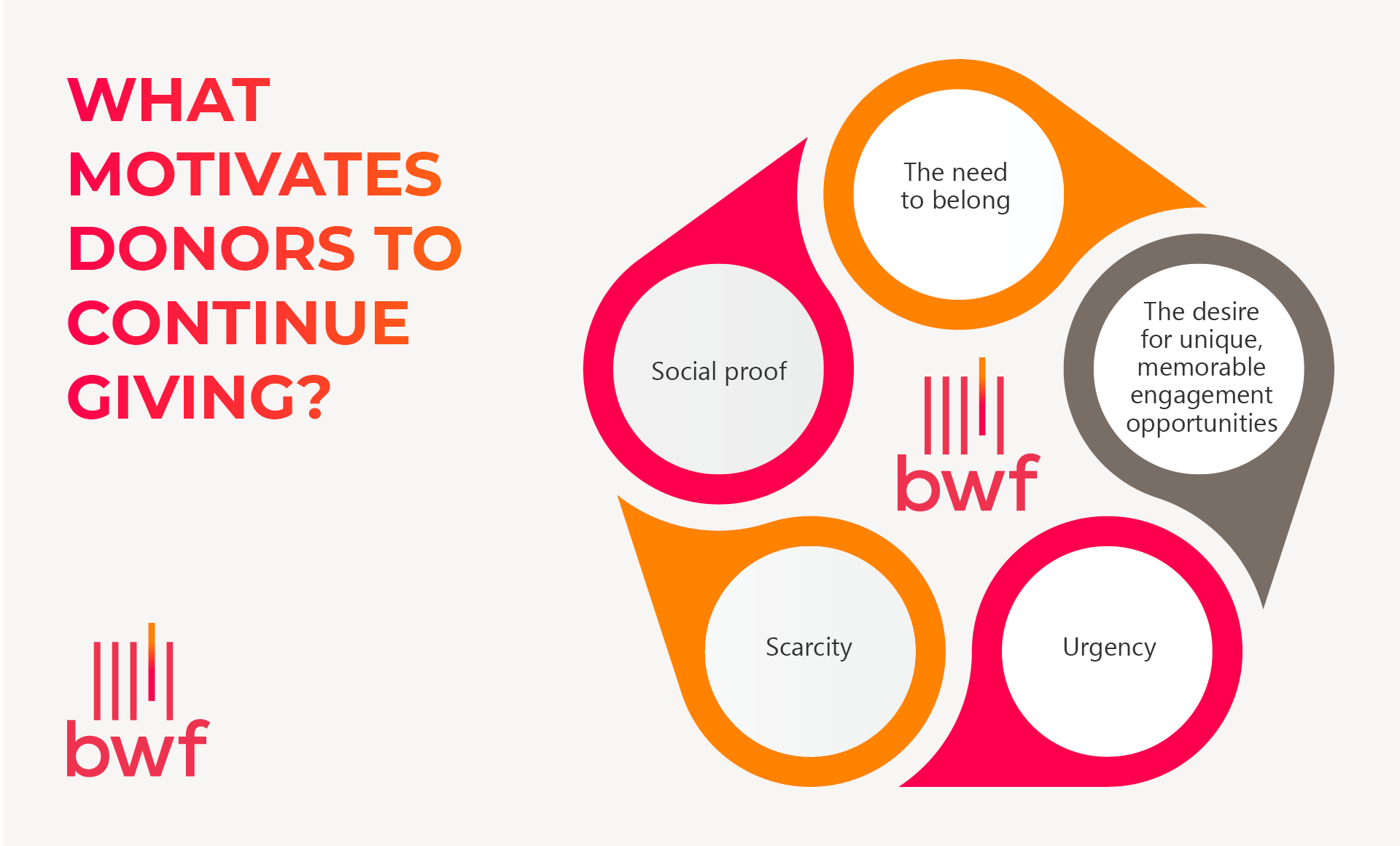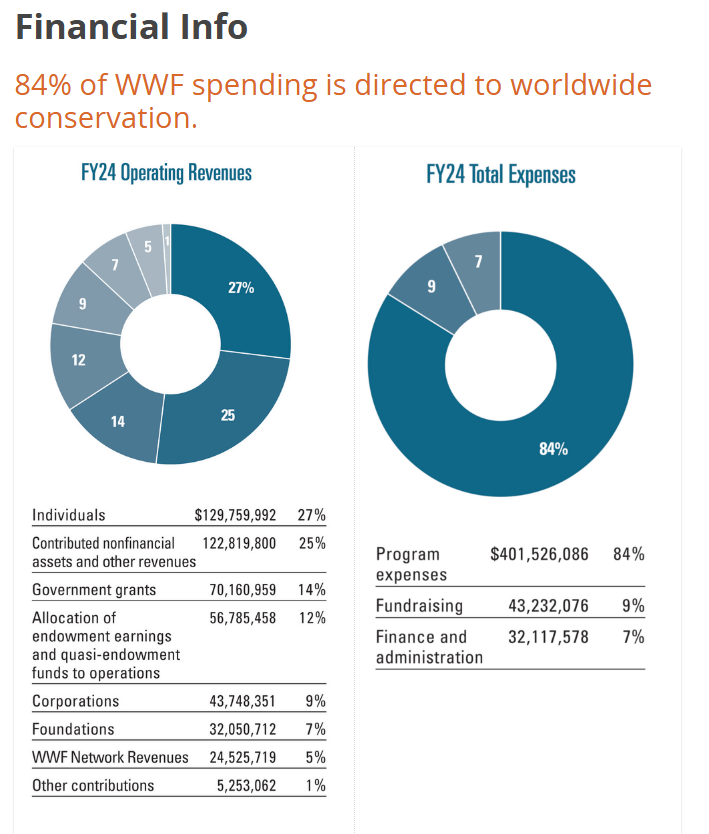According to the OneCause 2025 Fundraising Outlook report, 83% of nonprofits said donor retention is a top challenge. If you’re facing the same problem, you might continually ask yourself, “How can we convert one-time donors into dedicated, recurring supporters?”
The answer lies in your ability to engage donors and build relationships based on loyalty. This guide explores the current state of donor loyalty in the nonprofit sector and how your organization can optimize its approach to create a passionate and committed donor community.
The Current State of Donor Loyalty
Increasing donor loyalty starts with understanding who loyal donors are, what motivates them, and how they impact your organization’s success.
Who are loyal donors?
Loyal donors are donors who have a strong emotional connection to the organization or support the organization by consistent actions (giving, sharing social media posts, volunteering, etc.). According to Giving USA, some of their key characteristics include:

- Loyal donors are social: Approximately 1 in 4 U.S. adults identify as social donors, or those who give during social events or campaigns (peer-to-peer fundraisers, giving days, etc.). They are regular, consistent, and engaged in your mission.
- Loyal donors seek community: Over half of social donors value inclusivity and a welcoming atmosphere, highlighting the importance of community and engagement in donor retention strategies.
- Loyal donors who give frequently are valuable: The average recurring donor’s lifetime value is $7,604.17. However, keep in mind that donor loyalty is not always indicated by giving frequency. For many donors, recurring giving is more often a convenience factor. Non-financial engagement is often a powerful motivator for building loyalty, particularly with younger and newer audiences.
Donor loyalty isn’t just a metric to chase—it results from positive donor experiences. Loyalty is cultivated through thoughtful, consistent engagement, not isolated tactics.
How does donor loyalty impact contributions?
We can’t overstate the positive impact of donor loyalty on your organization’s fundraising efforts. The following studies emphasize this point:
- An About Loyalty study found that an increase of just 1% in donor loyalty leads to 20% more income and 15% more retained donors over three years.
- A Classy report found that:
- Loyal donors are twice as likely to increase donations compared to passive donors.
- Half of loyal donors are open to supporting a mix of new causes and organizations alongside those they’ve given to in the past.
Loyal donors play a crucial role in supporting your nonprofit’s fundraising efforts, from your annual fundraising goals to one-off campaigns.
Current challenges due to declining donor retention
Donor retention roadblocks pose a major challenge to fostering donor loyalty. The most recent Fundraising Effectiveness Project report explains that donor retention declined 4.6% year-over-year, and nonprofits only retain about 13% of new donors annually. Another report found that 62% of donors make only one gift in their lifetime.
Donors stop giving to nonprofits for a wide variety of reasons, including:
- Giving fatigue
- Not feeling recognized by the organizations they give to
- Feeling like the organizations no longer need their support
- Not receiving information about how the organizations used their gifts
The solution? Timely donor recognition, intentional and authentic relationship-building, and meeting donors where they are.
9 Strategies for Creating Loyal Donors
How can your organization mitigate current challenges and create a loyal donor base? Let’s explore expert strategies for developing loyal donors.
- Understand donor motivations.
- Use predictive modeling to identify prospective loyal donors.
- Combine automation and a human touch in donor outreach.
- Foster non-transactional opportunities for donor engagement.
- Be transparent with donors.
- Create campaigns focused on fostering donor loyalty.
- Focus on developing a sense of community and inclusivity.
- Build emotional connections through donor appreciation.
- Create a legacy or planned giving program.
1. Understand donor motivations.
We’ve explored what causes donors to stop giving, but what can your organization do to increase the chances that they continue contributing?
To answer this question, let’s turn to the world of social psychology. These are the top motivating psychological and social factors that influence donors to keep giving:

Social proof
Social proof is the concept that people will emulate what they see as the “correct behavior” in a given situation as modeled by other individuals. It is one of psychologist Robert Cialdini’s Six Principles of Persuasion, which he identifies as the most important factors influencing decision-making.
Your organization can leverage social proof by showcasing donor testimonials, case studies, and event recaps. These efforts show prospective contributors that they would join a group of like-minded individuals by giving.
Need to belong
Donors want to feel connected to a group working toward a common goal. This is called the “need to belong,” and it can be a powerful motivator for increasing support for your cause. To increase feelings of belonging, you can create special donor groups for supporters at different giving levels where they can access exclusive perks or opportunities, like special events.
The desire for unique, memorable engagement opportunities
Donors aren’t impressed with generic outreach opportunities—they want personalized, unique experiences that speak to their individual needs and interests. According to the State of Personalization report, 62% of consumers say a brand will lose their loyalty if it delivers a non-personalized experience.
Your organization should treat donors as individuals, not numbers, by storing personal information about them in your CRM and leveraging those details in donor outreach.
Urgency
Urgency is the idea that donors must act now to show their support rather than wait for an undetermined future. For example, you could send an urgent email telling donors to “give within the next 24 hours to have your gift doubled by a generous anonymous donor!” Use urgent language sparingly to increase its impact and let donors know which campaigns or projects they should prioritize in their giving.
Scarcity
Scarcity is the concept that donors have limited time to get involved with something. It’s another one of the Six Principles of Persuasion.
Of course, your nonprofit should offer donation opportunities whenever supporters feel inspired to give. However, you can still incorporate scarcity into your marketing. Consider the following examples:
- “Sign up for our financial literacy webinar today—only five spots left!”
- “Donate $20 to wildlife conservation now to receive our limited edition panda stuffed animal.”
Understanding these motivations can help your organization better understand how to organize its donor experience program. You can use these statistics and psychological principles to base your efforts on hard facts rather than hunches.
However, for some donors, these psychological needs do not stem from a desire or interest in forming a loyalty-based relationship. For some, the need to belong is simply FOMO (the fear of missing out) or giving because they’re at an event and want to be part of that atmosphere, and the organization’s mission has little to do with it. Efforts to build donor loyalty should account for this nuance by creating separate donor segments for likely one-time supporters and true long-term donors.
2. Use predictive modeling to identify prospective loyal donors.
Predictive AI leverages machine learning to analyze past data and predict future donor behaviors and campaign outcomes. Your organization can build a custom model based on your constituent data by working with an AI platform or consultant trained in AI fundraising.
An AI consultant can help clean your nonprofit’s data, establish ongoing data hygiene procedures, and build a strong data collection and reporting culture to ensure your organization maximizes AI’s insights. Remember that AI is not a cure-all solution—for most organizations, predictive modeling is just one piece of building AI capacity and fostering a data-driven fundraising culture.
If you choose to take this data analytics route, here’s what that process will look like:
- Identify characteristics of loyal donors. Your consultant will feed your donor data into an AI tool to identify common traits of loyal donors and build segments for loyal donors. These traits include high giving frequencies, large giving amounts, and a high level of engagement with other opportunities like volunteering. The tool will start training itself to recognize these patterns, allowing you to cultivate donors who show signs of longer-term affinity, even if they aren’t regular, recurring, or loyal donors yet.
- Create a model for donor loyalty. Using the specific criteria identified in Step 1, your consultant will help generate a model for identifying loyal donors and anticipating which infrequent donors have the capacity to become loyal supporters. You can feed new data into your model to continually be on the lookout for donors to prioritize in your loyalty-building efforts.
Your predictive model will help you increase the ROI of your donor loyalty program by allowing you to focus more time and energy on donors who are most likely to want to be involved with your cause long-term.
3. Combine automation and a human touch in donor outreach.
AI solutions like predictive analytics or marketing automation can be extremely helpful in streamlining your donor outreach efforts and increasing efficiency. However, you should still incorporate a personal touch so donors know that your organization cares about them as individuals.
Consider the following types of automation and how you can maintain a human touch when using them:
- Donor communications cadence: Your organization may have set an automated communication cadence via email or direct mail, with specific messages sent to cultivate relationships. You should still reach out using donors’ preferred platforms and communication frequencies to foster personalization.
- AI chatbots: Your organization’s website may include a chatbot as an internal search function that helps users look for specific information or resources. If the chatbot cannot answer users’ questions, provide them with contact information for a real person.
- Dynamic content journeys based on donor information from your CRM: You may also incorporate dynamic content into your email, direct mail, or text outreach that automatically incorporates details about each donor. Include donors’ names, references to their giving histories, and personalized calls to action in your outreach with the help of accurate data from your CRM.
Alongside these automated marketing efforts, your organization should always make an effort to reaffirm donor relationships by speaking directly with donors. Whether at an event, over the phone, or on a video call, get to know donors personally and store any new details you learn about them in your CRM to reference in future interactions.
In this process, your frontline gift officers will be essential in cultivating donor loyalty. Gift officers play an outsized role for leadership and mid-level donors who need the personalization expected by loyal donors. These team members can provide the personal, human touch many donors need to remain faithful supporters.
4. Foster non-transactional opportunities for donor engagement.
Your efforts to increase donor loyalty shouldn’t be solely based on increasing recurring gifts from donors. By engaging donors in a variety of ways, you can foster a stronger community mindset and appeal to their unique skills and interests.
Recruit donors to support initiatives such as:
- Advocacy
- Volunteering, including program or campaign volunteering
- Events
When donors are involved with multiple aspects of your mission, you make your relationship with them “stickier,” meaning they’re less likely to stop engaging with you. If you can make engaging with your organization part of their identity and lifestyle, they’ll likely stick around much longer.
5. Be transparent with donors.
Strong donor relationships are built on trust and clear communication. A YouGov survey found that 50% of donors reported being “put off” when they didn’t know specifically how their donation dollars were being spent.
Exercise transparency by sharing information about the following areas:
- Finances: Offer detailed financial information on your nonprofit’s website via annual reports, charts, and graphs.
- Impact of donors’ gifts: Share impact updates with donors via follow-up emails, texts, and letters. Be specific about the information you include. For example, you could say, “Did you know that your $200 donation helped us buy supplies to house five extra shelter dogs this weekend?”
- Challenges your nonprofit faces: Donors will respect when your organization doesn’t sugarcoat its challenges or obstacles. Be transparent about the current roadblocks you’re up against, whether losing a funding source, legislative setbacks, or a natural disaster that impacted some of your organization’s facilities.
For example, look at the World Wildlife Fund’s financial information page. The page includes an overview of revenue and expenses and the statement, “84% of WWF spending is directed to worldwide conservation.”

Supporters can also access recent annual reports, financial audits, and a conflict of interest policy. This page makes it incredibly easy for supporters to do their due diligence and investigate the nonprofit’s financial viability to make informed donation decisions.
6. Create campaigns focused on fostering donor loyalty.
Hosting at least one campaign per year focused on donor loyalty is a valuable use of your nonprofit’s marketing dollars. These campaigns should center the donor experience to spotlight donors’ accomplishments and thank them for their continued support. You can use any channel for donor loyalty campaigns, such as:
- Social media: Film interview testimonials with donors, volunteers, and beneficiaries to give your online audience a 360-degree view of what your organization means to your community.
- Email: Share donor spotlights and link to your website’s blog for longer-form content.
- Direct mail: Create a campaign encouraging donors to write in and tell the story of what your nonprofit means to them.
- Phone calls: Recruit staff members, volunteers, and board members to start a phone call campaign to connect with donors, hear their stories, and thank them for their support.
Here’s an example of what a donor loyalty campaign could look like on Facebook:
7. Focus on developing a sense of community and inclusivity.
Make your loyalty programs as accessible and inclusive as possible. Donors should feel welcome whether they give $10 per month or $3,000 per year.
Celebrate all donor accomplishments and anniversaries so everyone feels seen. These could include:
- The anniversary of the donor’s first gift
- When donors hit certain donation quantities, such as their 10th donation
- When donors increase their donation amounts to join new giving tiers
Send donors small appreciation gestures, such as personalized emails, certificates, or complimentary merchandise.
8. Build emotional connections through donor appreciation.
Donors give because they feel connected to your mission. One of the most effective ways to ensure they keep giving is to let them know that you sincerely appreciate their involvement and that their gifts made a real difference.
According to research on donors’ experience, about 13% of donors who stopped giving to a nonprofit reported that they did so because the organization didn’t acknowledge their support. Go above and beyond to show donors your gratitude with the following appreciation ideas:
- Personalized impact reports: Send donors tailored impact reports that show the impact of their donations over time. For example, create a report for a monthly donor showing them how many people their recurring gifts have helped since they started contributing.
- Beneficiary-led gratitude efforts: Ask if beneficiaries would be willing to donate some time to write thank you letters to donors or be interviewed for appreciation videos. Address the letters with donors’ names and reference their unique gift amounts.
- Special events: Plan inclusive gatherings for your donor community, such as appreciation galas, trivia nights, or happy hours.
- Invite donor feedback regularly: Asking for feedback does not just improve your fundraising processes; it demonstrates that donors’ voices and experiences matter, which enhances their connection with your organization.
Track donors’ engagement with your appreciation efforts to determine how each donor likes to be recognized. For example, if a certain donor responds to your impact report email but never attends events, put a note in their donor profile to focus your outreach efforts on email communications.
9. Create a legacy or planned giving program.
Your efforts to increase donor loyalty shouldn’t just focus on boosting recurring or monthly donations. Your strategy should also prioritize donors who give one-time major or planned gifts.
These donors require intentional stewardship and relationship building. Because major and planned gifts are so large, it may take prospective donors time to determine whether they want to devote their funds to your cause.
We recommend using journey mapping to build donor loyalty. Journey mapping outlines the various steps donors take in engaging with your nonprofit and the interactions they have with your organization. It represents every stage of the donor lifecycle, from initial awareness to long-term involvement.
When paired with message testing and audience segmentation, journey mapping can reveal key inflection points where donors deepen or diminish their relationship with the organization. Journey-based campaigns can account for these moments and enhance donor loyalty.
By following the donor loyalty strategies outlined above, you can increase the chances that these donors will think of your organization when it comes time to contribute their gift or bequest.
Create Meaningful Donor Interactions with BWF’s Support
As you can see, increasing donor loyalty involves many components. But the process doesn’t have to be stressful—we recommend working with a donor engagement consultant who can offer expert guidance and design a strategy tailored to your organization’s unique needs.
Our top recommendation is BWF, a long-time donor relations and experience leader. At BWF, we take a holistic approach to building the donor journey and strategize how to surprise and delight donors at every stage. Our comprehensive donor engagement services include:
- Donor relations assessment to identify opportunities for improvement
- Donor loyalty program development through a customized plan incorporating your donors’ unique attributes
- Campaign and event support to develop bespoke donor loyalty campaigns and stewardship events through segmentation, strategic campaign design, and other digital engagement techniques
- DonorAI predictive fundraising to create custom models for identifying prospective and current loyal donors
- Robust reporting and business intelligence to maintain data security and integrity
Want to hear about our work in action? Watch this video to learn more about our successful partnership with the University of Wisconsin-Parkside:
Once you’ve established a loyal base of supporters, how do you activate it further? Whether elevating donors through the pipeline or weaving ongoing engagement into the donor experience, BWF’s team can help turn loyal donors into lifelong champions.
Wrapping Up
Your organization should prioritize creating a donor engagement program where your efforts to build loyalty are consistent, personalized, and ongoing. Rome wasn’t built in a day, nor are donor loyalty programs—they require careful cultivation and dedication to create a better donor experience.
When donors feel welcomed and appreciated by your organization, they’ll be much more likely to support you year after year and with larger gifts.
Explore these additional resources for more information on building a successful donor engagement strategy:
- The 2024 Nonprofit AI Quick-Start Guide: Tips for Success. Learn how your organization can use AI donor management solutions quickly, effectively, and responsibly.
- Mid-Level Donor Strategy: Steps to Engage and Build Trust. Use this guide to enhance relationships with an essential and reliable group of supporters—mid-level donors.
- AI Fundraising Use Cases: Ways to Propel Your Giving Efforts. Discover the vast range of AI fundraising use cases your organization may be interested in to support your revenue goals.
Let’s Talk
Find out how BWF can support your donor loyalty strategy and engagement goals.









